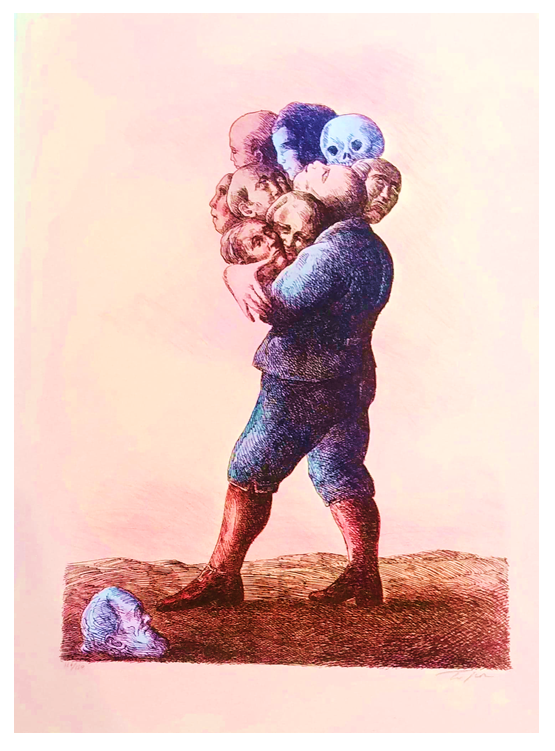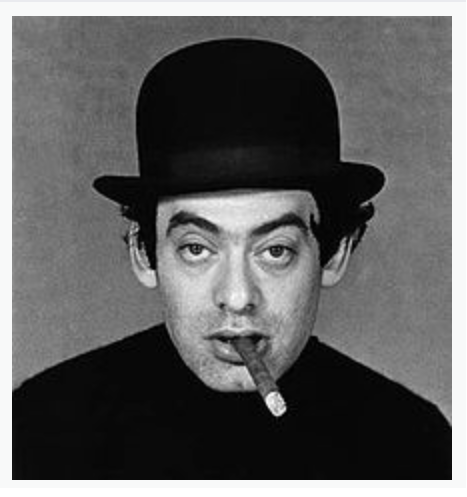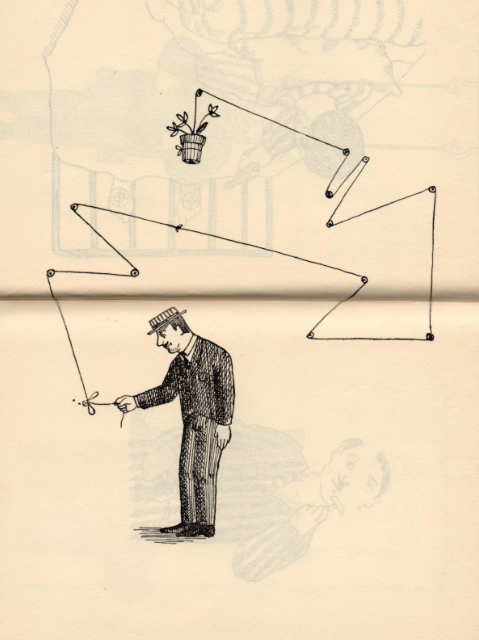

Roland Topor (January 7, 1938 – April 16, 1997) was a French illustrator, comic artist, cartoonist, painter, novelist, playwright, film and TV writer, filmmaker and actor, known for the surreal nature of his work. He was of Polish-Jewish origin and spent the early years of his life in Savoy, where his family hid him from Nazi peril. Savoyen is a cultural region in Central Europe. It comprises roughly the territory of the Western Alps between Lake Geneva in the north and Dauphine in the south.
Surrealism is a cultural movement that began in the early 1920s, and is best known for its visual artworks and writings. Artists painted unnerving, illogical scenes with photographic precision, created strange creatures from everyday objects, and developed painting techniques that allowed the unconscious to express itself. Topor was one of the most surreal and versatile artists of the second half of the 20th century. He gained notoriety as one of the home cartoonists of the subversive French magazine Hara-Kiri (later Charlie-Hebdo). While his drawings were not as harsh or political as those of his colleagues, they were certainly disturbing and macabre. They are often surreal juxtapositions of people, animals, plants and objects. Topor seldom used words in his illustrations, leaving all power to the visual.

Topor, with Rene Laloux, made “The Dead Times” (Les Temps Morts, 1964), “The Snails” (Les Escargots, 1965) and their most famous work, the feature-length “La Planet Sauvage” (1973). This allegorical story is about humans living on a strange planet dominated by giant humanoid aliens who consider them animals. Topor also worked as an actor, his most famous part being Enfield in Werner Herzog’s “Nosferatu, Phantom der Nacht”
Le Soutien de familie / El apoyo de la familia- Litografía
Roland Topor (7 de enero de 1938 hasta 16 de abril de 1997) fue un ilustrador francés, dibujante de cómics, caricaturista, pintor, novelista, dramaturgo, guionista de cine y televisión, realizador y actor, conocido por la naturaleza surrealista de su obra. Él era de origen judío polaco y pasó los primeros años de su vida en Savoy, donde su familia lo ocultó de los Nazi. Savoyen es una región cultural en Europa Central. Incluye aproximadamente el territorio de los Alpes Occidentales entre el lago de Ginebra en el norte y el Dauphine en el sur.
El surrealismo es un movimiento cultural que comenzó en la década de 1920, y es mejor conocido por sus obras de arte visuale y trabajos escritos. Artistas pintaron escenas, ilógicas y enervantes con precisión fotográfica, crearon extrañas criaturas de los objetos cotidianos, y usaron técnicas de pintura desarrollados que permitieron que el inconsciente se exprese. Topor fue uno de los artistas más surrealistas y versátiles de la segunda mitad del siglo 20. Él ganó notoriedad como uno de los dibujantes de origen de la revista francesa subversiva Hara-Kiri (más tarde llamada Charlie-Hebdo). Mientras que sus dibujos no eran tan severos o políticos que los de sus colegas, eran ciertamente inquietantes y macabros. A menudo fueron yuxtaposiciones surrealistas de personas, animales, plantas y objetos. Topor rara vez utilizaba palabras en sus ilustraciones, dejando todo el poder en lo visual.
Topper con René Laloux creo “The Dead Times” (Les Temps Morts, 1964), “Los Caracoles” (Les escargots, 1965) y su obra más famosa, la película de largometraje de “La Planeta Sauvage” (1973) una historia alegórica sobre los seres humanos que viven en un extraño planeta dominado por humanoides gigantes del espacio que los tratan como animales. Topor también trabajó como actor y su actuación mas famosa fue como Enfield en “Nosferatu, fantasma de la noche” película de Werner Herzog.
